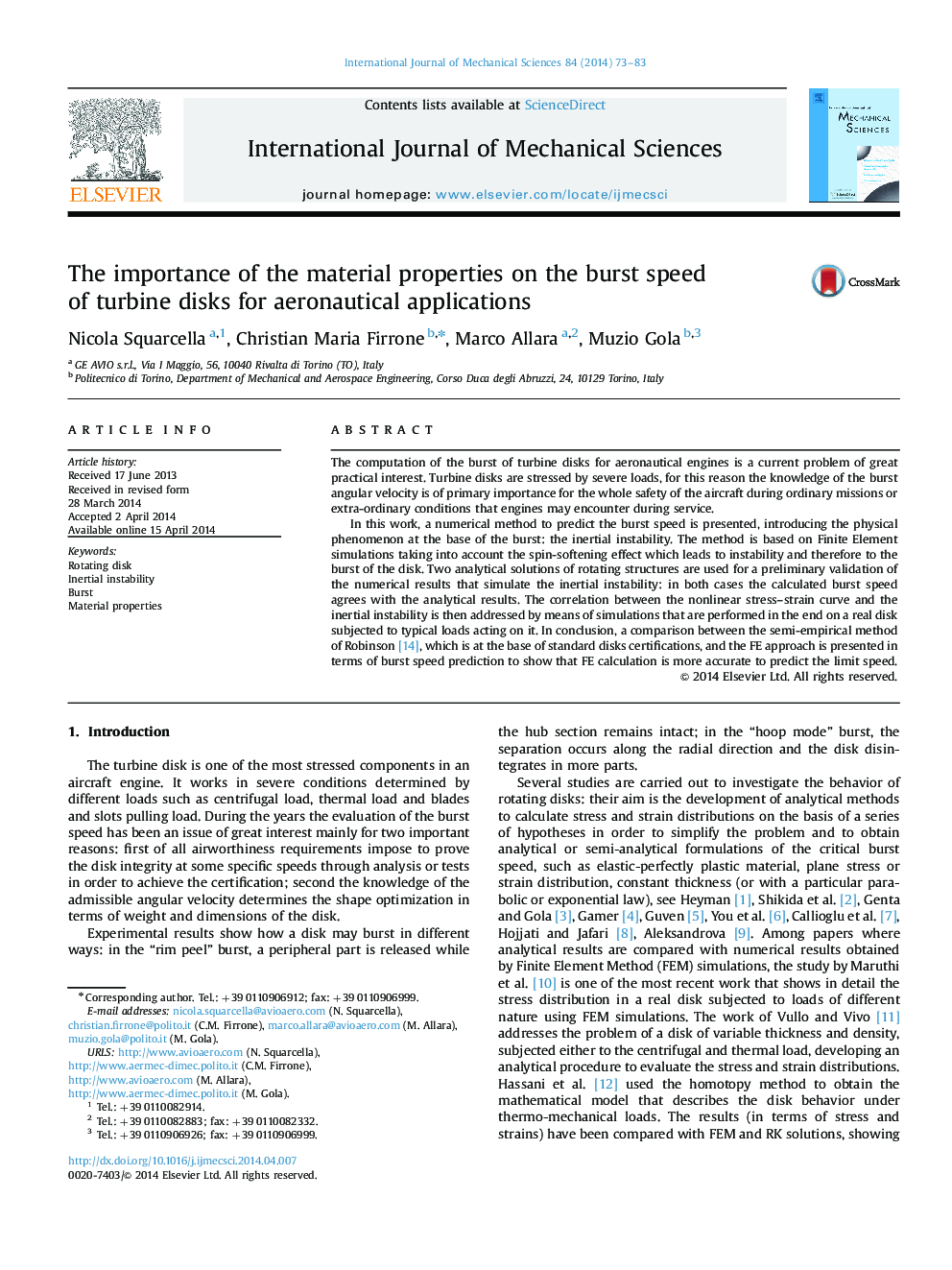| Article ID | Journal | Published Year | Pages | File Type |
|---|---|---|---|---|
| 782402 | International Journal of Mechanical Sciences | 2014 | 11 Pages |
•The burst of the turbine disks is related to the inertial instability phenomenon.•Ansys simulation is a reliable and accurate tool to take into account the phenomenon.•Material properties have a strong impact on disk burst.•Robinson criterion is less conservative than FE approach for some material curves.•Thermal gradient has no impact on disk burst.
The computation of the burst of turbine disks for aeronautical engines is a current problem of great practical interest. Turbine disks are stressed by severe loads, for this reason the knowledge of the burst angular velocity is of primary importance for the whole safety of the aircraft during ordinary missions or extra-ordinary conditions that engines may encounter during service.In this work, a numerical method to predict the burst speed is presented, introducing the physical phenomenon at the base of the burst: the inertial instability. The method is based on Finite Element simulations taking into account the spin-softening effect which leads to instability and therefore to the burst of the disk. Two analytical solutions of rotating structures are used for a preliminary validation of the numerical results that simulate the inertial instability: in both cases the calculated burst speed agrees with the analytical results. The correlation between the nonlinear stress–strain curve and the inertial instability is then addressed by means of simulations that are performed in the end on a real disk subjected to typical loads acting on it. In conclusion, a comparison between the semi-empirical method of Robinson [14], which is at the base of standard disks certifications, and the FE approach is presented in terms of burst speed prediction to show that FE calculation is more accurate to predict the limit speed.
